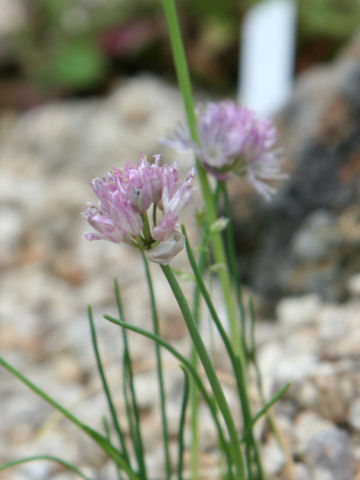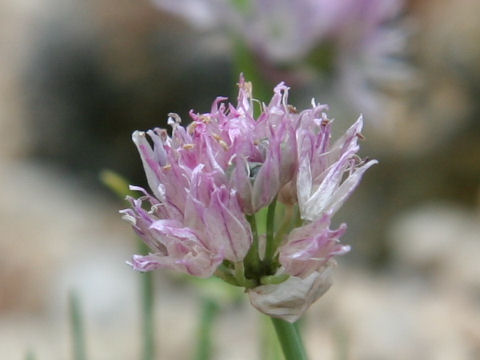 |




|

|
íªÌÅLíÅAkC¹ÌúR¬ÌA|CxâyiÙëÜñjxA¹ìÌå½i¨¨ÑçjRɪzµÄ¢Ü·BRÑ©çRÑÌÖäânÑâÎDânÑɶ¦A³ÍPO`QOZ`ÉÈèÜ·BtÍ~`ÅsÌîÉWÜÁÄ«ܷBV©çW²ëAÔsðLεÄs¸ÉU`Ôð¯AWgF©çFÌÔð穹ܷBÔÍ¿ÌäÉïÜêÜ·BYµ×ÍÔâÐæèZ¢àÌÅ·B
|

|
ÈlM®Ì½NÅAw¼Í Allium schoenoprasum var. yezomonticolaBp¼Í èܹñB
|

|
"Hime-ezo-negi" (Allium schoenoprasum var. yezomonticola) belongs to Lilaceae (the Lily family). It is a perennial herb that is endemic to Japan and is found on Mt. Apoi and Mt. Horoman in the Hidaka Mountains, and on Mt. Oobira of southern Hokkaido. It grows in serpentine and limestone areas in the subalpine to alpine zones and is 10 to 20 cm tall. The leaves are cylindrical and clustered at the base of the stem, and around July to August, the flower stalk grows to form an umbel at the top of the stem, producing light red to white flowers. The inflorescence is surrounded by membranous bracts. The stamens are shorter than the tepals.
|

|
åãsß©æuçâ±ÌÔÙvÉÄA2006N0711úBeB
|



